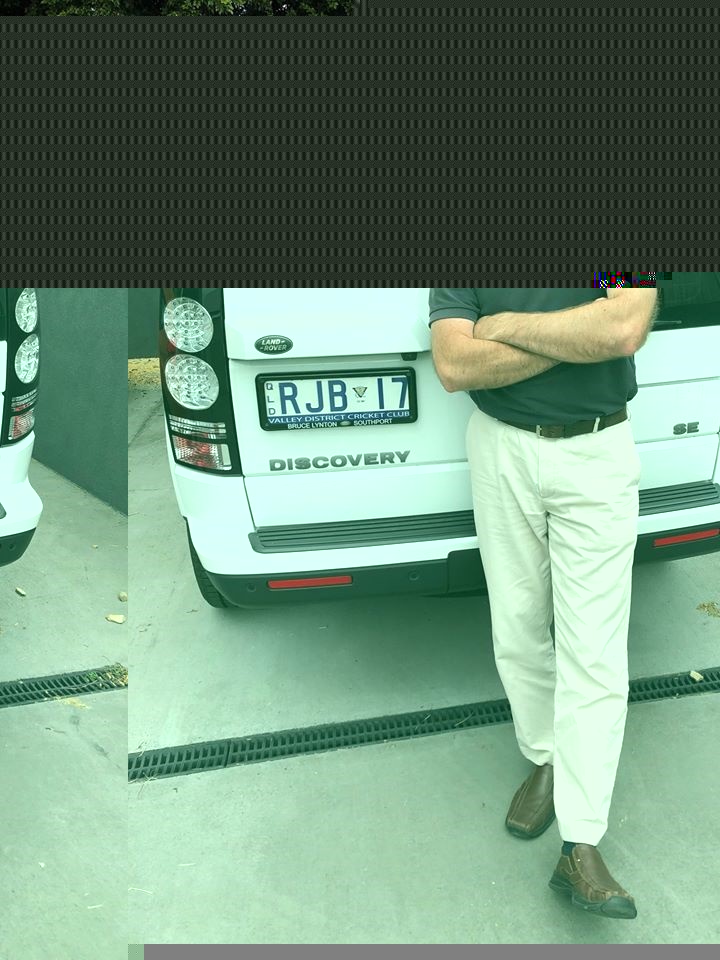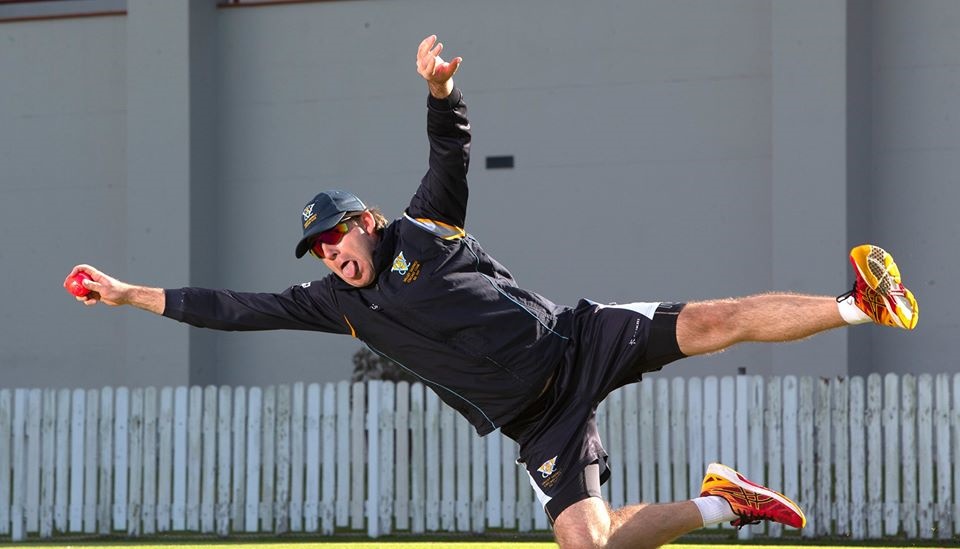Robert Bailey - Chiropractor, Cricket Tragic, The Fast Bowler
Sheldon Stackpoole | August 25, 2023

Some know Dr Robert Bailey through his 20 plus years of private practice as a Chiropractor in Brisbane’s inner west where he specialises on the management and rehabilitation of lumbar disc injuries.
Others know might know of Robert as a cricket volunteer with a ’take no prisoners’ approach that gets the job done and can always be counted on to ruffle a few feathers along the way.
But in his spare time Robert is engaged in PhD level research at Queensland University of Technology (QUT) to find answers to the question of the best way to manage our future fast bowling stocks.
I sat down with Robert to talk about his life as a professional, volunteer and his research in cricket strike force “The Fast Bowler”.
SS: Robert thanks for joining me today.
RJB: Thank for having me Sheldon.
SS: How are you coping with the current social isolation protocols?
RJB: Well it’s certainly required a lot of additional hygiene protocols in the practice but otherwise I have found it a tremendous opportunity for planning and getting work done.
SS: So Robert tell us about your professional life?
RJB: I graduated as a Chiropractor almost 20 years ago and entered private practice like almost all Chiropractors. I’ve been fortunate enough to work with the Brisbane Broncos, Brisbane Roar and Queensland Reds but I focus my practice on managing lumbar disc injuries as it seems to be something that few manage very effectively.
I completed an Honours Degree at University of Queensland and taught anatomy there for a bit over a decade and still teach in the University environment when the opportunity presents.
I’ve also spent 15 years in Health Regulation on Health Registration Boards, disciplinary panel chair, independent expert, mentoring and most recently as a part of the Federal Governments investigation into Medicare fraud.
SS: Why focus on the lumbar disc?
RJB: It won’t surprise you to hear that I could talk for a long time about the lumbar disc as it is a particular passion of mine. But disc injuries are indicated in conservatively 80% of low back pain. A lot of conservative management throws a core stability and stretches at them in an effort to get the patient better. But in my opinion unless you recondition the disc itself you simply don’t resolve the underlying weakness that is creating the problem. So I use specific spinal traction to target to disc and stimulate reorganisation of the disc to address this underlying weakness.
SS: Interesting. So tell us about your activities as a cricket volunteer?
RJB: Mate I just love cricket. I think it is a tremendous foil for us to teach males and females of all age’s lessons that can enable them to become a better version of themselves and get more out of their lives. I’m heavily involved in boosting female participation with Brisbane North Junior Cricket Association and Warehouse Cricket. This naturally flowed onto involvement with senior cricket through my club Valleys and QSDCA and I’ve been the President of the Australia Cricket Societies Queensland Branch for about 7 years now.
SS: Are you still playing?
RJB: Well at the age of 45 it’s probably more accurate to say participating. But yes I still play lower grades at Valley as I really enjoy helping young kids transition from junior to senior cricket. Of course much to their future partner’s dismay my secret agenda is to make them lifelong raving fans of the club and game.

SS: How did your interest in research into fast bowling come about?
RJB: I’ve had interest in fast bowlers and stress fractures since I studied Chiropractic 20 years ago but when I became involved in the Cricket Society it gave me the opportunity to chat to a lot of old fast bowlers and cricketers. It quickly became apparent to me that there was a lot of frustration within this group as they simply didn’t feel that they had a voice on the topic.
I completely understood their frustration as while they might not have PhD after their names most of them had a life time of hands on experience at the coal face as fast bowlers. The flip side of course is that sports scientists are very good at what they do and the body of evidence supported what they were doing. So who was right?
At this point in time it helps to take a step back and understand that science is simply a tool. A logical instrument that is without a doubt the most effective mechanism that human beings have had to understand the world around them. It’s a bit like a computer that will reliably answer your questions . . . but are you asking the right questions?
The reality is that sports science and sport health science is heavily dominated by sports trainers and physiotherapists who as a result of their training view problems in terms of a muscle. Think of it like going down to the shop and asking the Butcher, Baker and Fish Monger what you should have for dinner. The Butcher is probably not going to tell you that you should feed the family a nice piece of Atlantic Salmon is he?
Something else that seemed to be a constant theme in bowler injury was injury in young bowlers during their teens. It was often explained in terms of increased bowling loads associated with greater opportunities to play or talent identification and involvement in elite pathways. But there are a lot of other things going in the life of a teenager during these years and I couldn’t help but wonder about the impacts of growth during this period. Specifically how teenagers grow.
SS: So tell us about your activities with QUT?
RJB: I suppose I’m probably a bit too much of a critical thinker. So like I just mentioned the more I talked about bowling workloads and management of fast bowlers the more I began to question the evidence and decision making that underpinned these practices. Anyone can have a 10 second opinion but the end of the day you’re not going to get very far in the modern world without evidence. Therefore I thought that I might team up with QUT to see if I could create new knowledge on a better way to manage fast bowlers.
SS: That makes sense. So what is your research investigating more specifically?
RJB: It will come as no surprise to anyone to hear that human growth during teenage years isn’t a nice predictable straight line. Rather teenagers have periods of relatively little or stable growth punctuated by short rapid accelerations where they might grow several centimetres in the space of a few weeks. More or less everyone has experienced these growth spurts right?
Well the scientific literature doesn’t have a lot of detail on this process and it has even less information on the impact that this process has on your ability to perform a given task or the ability of the body to sustain them. I mean do you think that a young fast bowler growing 6 centimetre’s in 4 weeks is likely to have to make adjustments to their bowling? It seems reasonable that such rapid period of growth could challenge the body to rapidly adjust various balance and power systems as it learns too work it’s newly transformed body.
But more than that if we look at how the body changes its tissue composition during growth. As a general rule our bodies get fatter, then the bones get a bit longer before getting stronger and finally we add the muscle needed to weld our new form. You could even argue that this process happens well into adult life, except we forget about the final 3 steps and just keep getting fatter!
But it makes sense that the timing of these changes combined with the body rapidly learning how to master its new form could be a critical period in development.
SS: I guess that some resemble that last statement more than others. So you think that growth spurts are a dangerous time for teenagers?
RJB: Not necessary. I think that if you understand what is happening in the athlete they could present opportunities to modify training and actually be extremely beneficial. But that is why we need to do the research to better understand what factors are at play with young fast bowlers so that we can produce better outcomes. Like I said earlier it’s all about the questions that you’re asking.
For example research in elite senior pathway cricketers in the UK has shown specialisation in the lumbar spine of fast bowlers very different to batsman. This specialisation includes increased bone density similar to that seen in rugby players and differences between the strength of both sides of the spine. But what we don’t know is when this specialisation starts to take place? It might be that appropriately loading the spine is essential to creating this specialisation and providing important resilience to injury.
SS: So how do you tell how 'specialised' a spine is?
RJB: Depending on what you are measuring there are plenty of different tools available but as you are investigating bone many use unacceptably high levels of radiation. So in my project with will use something called dual-energy x-ray absorptiometry or DEX for short. It uses energy beams to measure the body tissue composition before using a series of mathematics and standard tables to divide the measurements into different tissue compositions. It uses such a low dose of radiation so neither the operator or patient need to use any protective shielding which means that you can take relatively regular measurements during the research period.
SS: From the sound of it you’re saying that bowling restrictions are a bad thing?
RJB: It’s very early days in my research but I think that regulation of young fast bowlers is a common sense solution during venerable periods. Hopefully we can tease out exactly what is happening in young fast bowlers and develop more sensitive ways of managing them.
It might be that we have a bit of a chicken and egg situation where if they don’t bowl they don’t develop the co-ordination and physical architecture to sustain bowling loads when they are older. The research in adult bowlers seems to show that the lumbar spine under goes specific changes to enable it to cope with the rigours of fast bowling. If we better understand these specialisations then we are in a better position to determine what is best for young bowlers in terms of their development and preventing injury.
Overloading any athlete in any specific activity will ultimately break them so knowing what is too much is definitely important. But maybe their body needs to be exposed to a certain amount of stress at the appropriate time in order to stimulate it to undergo the adaptions to safely bowl into adulthood.
SS: Robert that’s probably all that we have time for today but thank you very much for talking with us. We look forward to hearing from you over the next couple of years as your research progresses.
RJB: Thank you for having me Sheldon.








